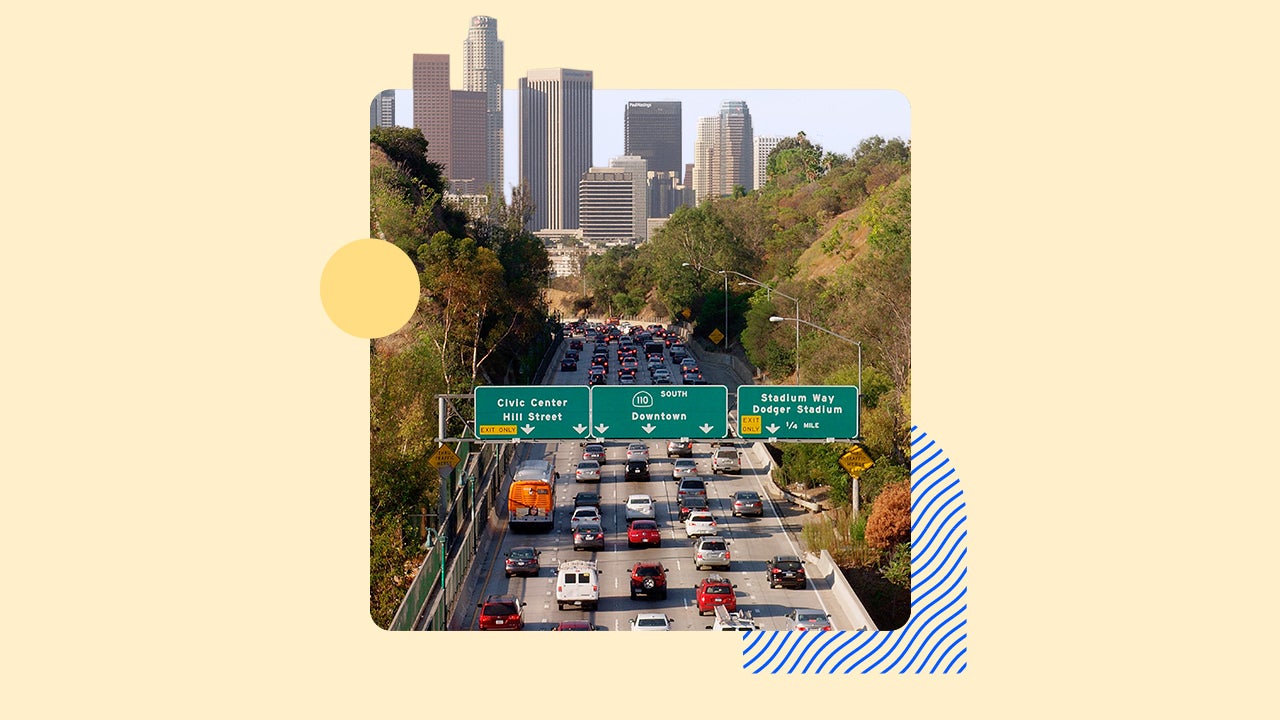California car insurance laws



While people from SoCal and NoCal may not agree on much, one thing they must mutually agree on is California’s statewide car insurance laws. This may sound unfair, considering how different the driving environments can be in the rural towns of the Redwoods and the metropolitan center of Los Angeles, but the law is the law. Which is precisely what Bankrate’s insurance experts are about to cover. In this breakdown of California’s insurance laws, you’ll learn about coverage requirements, low-income insurance programs, penalties for driving without insurance and more.
Car insurance laws in California
According to the California Department of Motor Vehicles, you must carry specific amounts of car insurance coverage to operate a vehicle on public roads, which is sometimes referred to as fulfilling your financial responsibility. In addition, you are also required by California car insurance laws to keep proof of insurance in your vehicle at all times. You’ll need to physically or digitally present this proof of insurance when requested by law enforcement, after an accident and when renewing vehicle registration at the DMV. Below is a list of state-accepted forms that qualify as proof of insurance
- At least a state-minimum car insurance policy
- A cash deposit of $35,000 to the DMV
- DMV-issued certificate of self-insurance
- $35,000 surety bond from a licensed California business
California also has laws pertaining to which factors insurers can use when calculating your rate. According to California auto insurance laws and regulations, insurers may not consider a driver’s credit score and gender when setting their insurance rate.
What is California’s Low-Cost Auto Insurance Program?
If you can’t afford car insurance or fulfill any of the other mentioned options for financial responsibility, California does offer a Low-Cost Auto Insurance Program as an alternative. Under this program, low-income drivers can access liability insurance at rates significantly cheaper than traditional insurance avenues. To find out if you qualify for the program, you can take a questionnaire on the CLCA website.
Liability insurance in California
Most California drivers purchase an auto insurance policy to fulfill their financial responsibility requirement. Per state law, all drivers must carry at least the minimum coverage amount for liability insurance to financially protect themselves and other drivers on the road, which includes the following limits:
- $15,000 in bodily injury liability coverage per person
- $30,000 in bodily injury liability coverage per accident
- $5,000 in property damage liability coverage per accident
Uninsured/underinsured motorist coverages must be offered but can be declined in writing.
There are two limits for bodily injury liability: per person and per accident. These designations refer to how much money will be paid out according to the situation. For example, if a driver with the state’s minimum liability requirements is at-fault in an accident, their insurance company may pay each person in the not-at-fault vehicle up to $15,000 for expenses related to bodily injury liability, such as medical bills, long-term care costs and lost earnings, with the total payout for the accident capped at $30,000. Anything above this $30,000 limit would be the driver’s responsibility to pay out-of-pocket.
There is no guarantee that California’s minimum liability requirements will be enough to cover the full cost of an at-fault accident. Most insurance professionals recommend that drivers purchase higher liability coverage limits and additional coverage to better financially protect themselves. Full coverage car insurance includes both comprehensive and collision coverage, which covers physical damage to your vehicle and could also include California’s optional uninsured and underinsured motorist coverage offerings. Collision coverage covers your vehicle if it is damaged during an accident, while comprehensive coverage covers other perils like theft, weather and falling objects.
Is California a no-fault state?
California is not a no-fault state. Instead, California is a tort state, which means the not-at-fault driver relies on the at-fault driver’s insurance policy to pay the majority — in some cases, all — of their medical bills, lost wages and other qualifying expenses.
We can’t say you’ll always get rewarded for all of your damages because California also uses a pure comparative negligence system to determine fault after an accident. In this system, each party involved in an accident can recover damages from the other party based on their percentage of fault. For example, if you were 20% at fault, you could recover 80% of damages from the other party. However, even though the other driver is paying you 80%, they can also claim 20% from you.
Penalties for driving without insurance in California
California insurance laws state that drivers who do not carry the minimum amount of liability insurance are subject to penalties. Here are some of the punishments that Californians can face for driving without insurance or financial responsibility in the state:
- For your first conviction, you may be charged a fine between $100 and $200, with subsequent convictions significantly increasing to between $200 and $500.
- You may also be subject to California penalty assessments, which are surcharges that are determined based on where you live and what the original fine you were charged. These surcharges can easily double or triple your total fine amount for driving without insurance in California.
- Your vehicle may be impounded, and your license may be suspended.
- You may be required to file an SR-22 form.
It’s important to note that these are just the direct penalties for driving without insurance in California. There are also indirect negative consequences, such as high insurance costs while having an SR-22 and crazy out-of-pocket expenses if you’re involved in a car accident while uninsured.
Additional auto insurance coverage options in California
California’s minimum car insurance requirements alone may not offer you enough financial protection. Liability insurance only helps if you are found liable for damage — what about instances when you are not at fault? Or random acts like vandalism, vehicle theft or a fender bender? California drivers might consider purchasing these other types of car insurance, on top of the state’s legal requirements, for more robust financial protection:
- Medical payments: This pays for medical bills up to the coverage limit for you and any other passengers in your vehicle in the event of an accident, regardless of who was at fault.
- Uninsured and underinsured motorist insurance: If you are involved in an accident caused by a driver who does not have insurance or enough insurance to cover the losses, these coverage types could kick in to pay for your medical bills and lost wages. Uninsured motorist coverage may even cover property damage to your vehicle caused by a driver in a hit-and-run.
- Gap insurance: Drivers who have a lease or loan may consider purchasing gap insurance. After an accident, it covers the difference between a new car’s depreciated value and the remaining loan balance on the vehicle.
- Roadside assistance: Roadside assistance covers basic vehicle repairs, towing, extrication, refueling and battery services if the car breaks down.
- Rental car coverage: If you were involved in an accident and your vehicle is at the repair shop, this can cover the expense of a rental car up to a certain dollar amount per day for a set period of time.
Frequently asked questions
-
-
There are lots of excellent insurers that write auto policies in California, but the best company will change from person to person. Each individual has unique insurance needs, and some companies will be better able to meet those needs than others. If you are a tech-savvy student, you might need a company that offers student discounts and robust digital tools. Or, if you’d rather handle your insurance needs in person and build out a custom policy, you might gravitate toward a company with a vast agent network and a lengthy list of coverage add-ons. Once you determine what your insurance needs are, you can do the research (with Bankrate’s help) to pinpoint the company that best works for you.
-
Like the best car insurance company, the cheapest car insurance company in California will also be different for each driver. Some companies, like Geico, Capital, Mercury and Progressive, offer low average rates in California, but that may not be the case for all drivers. Each insurance company uses a unique underwriting algorithm to set rates, and thus weigh different rating factors differently. Additionally, the amount of coverage you purchase will also influence your insurance costs. Generally speaking, the more you add to your policy and the higher your coverage limits are, the more expensive your insurance policy will be.
-
The average cost of car insurance in California is $2,701 per year for full coverage and $650 per year for minimum coverage, compared to the national average cost of $2,542 for full coverage and $740 for minimum.
-
There are many ways California drivers can score a better car insurance rate, one of which is taking advantage of discounts. You can speak with a licensed insurance agent to see which discounts you may have missed out on when you first signed up for your policy. Raising your insurance deductible could also result in a lower premium, but be cautious when doing so. If you choose to increase your deductible, make sure that it is still an amount you can realistically afford to pay out at a moment’s notice.
-




